今帰仁城跡 2006年9月12日調査
| 公園案内図 |
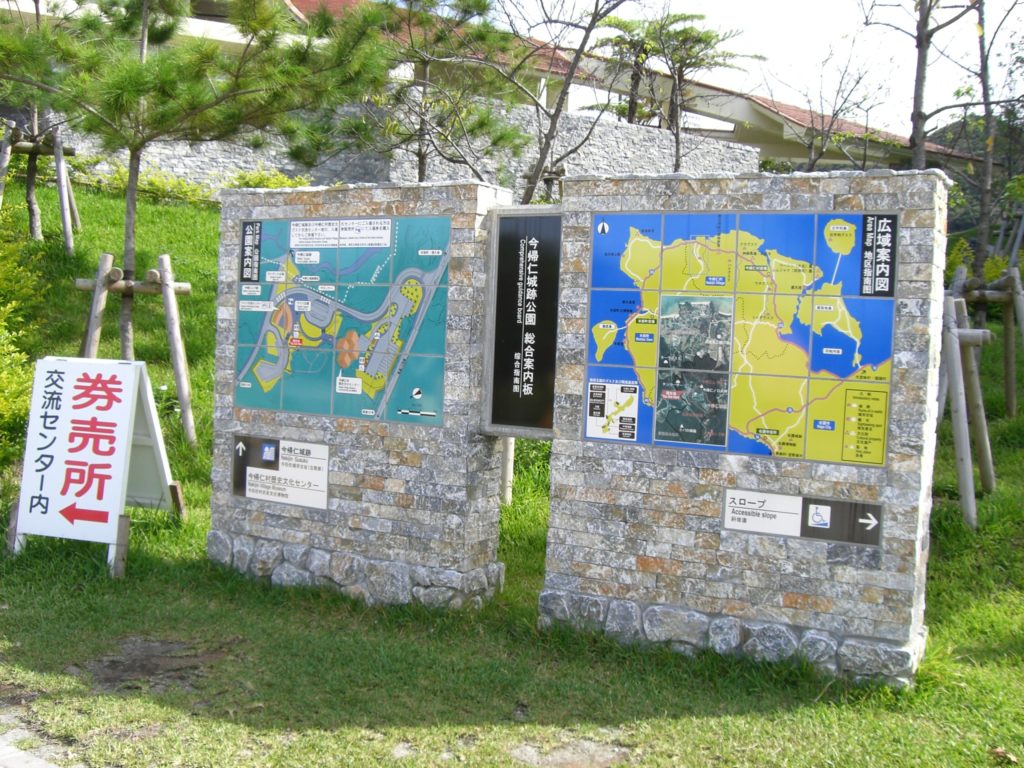 |
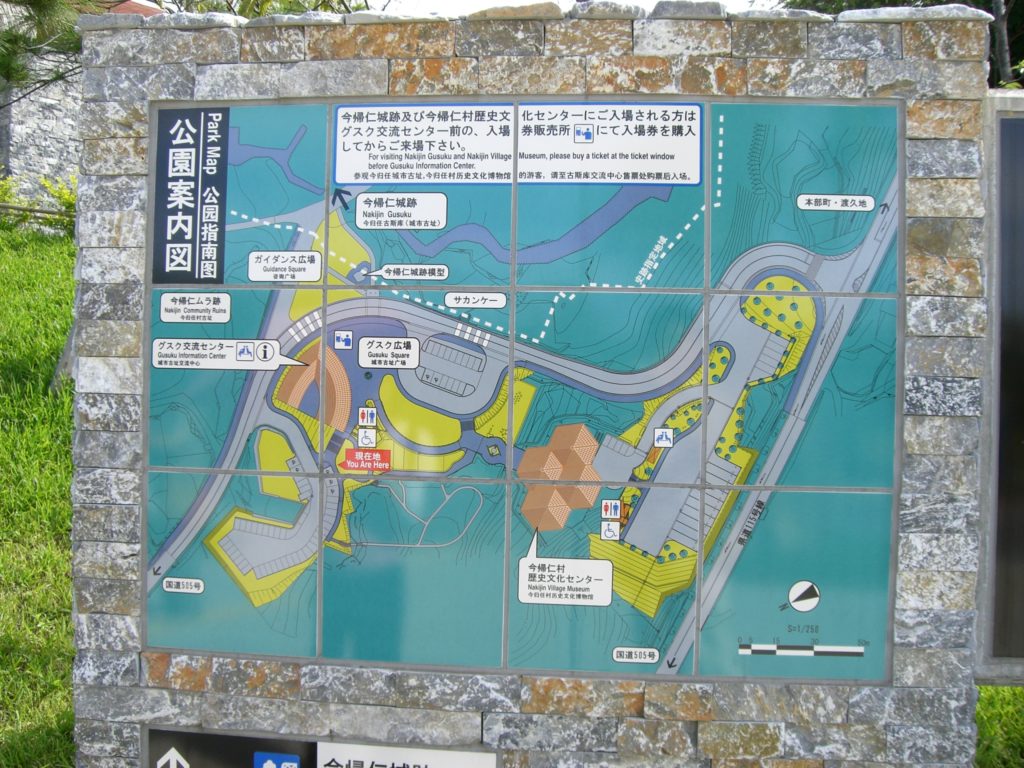 |
|
志慶真門郭、大隅、主郭(本丸)、大庭・御内原 |
| 世界遺産エンブレム(紋章) |
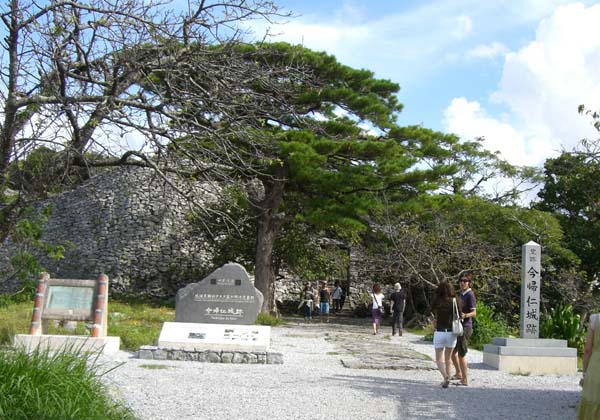 |
 |
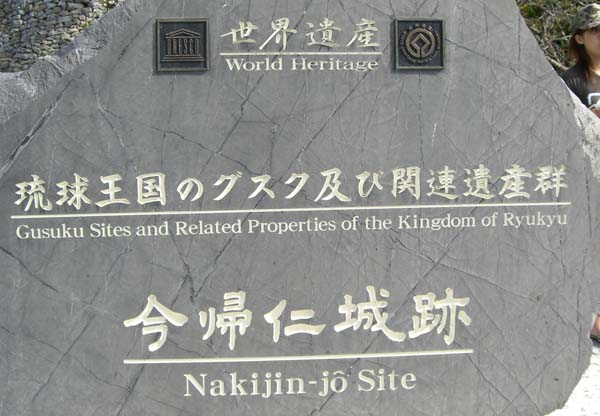 |
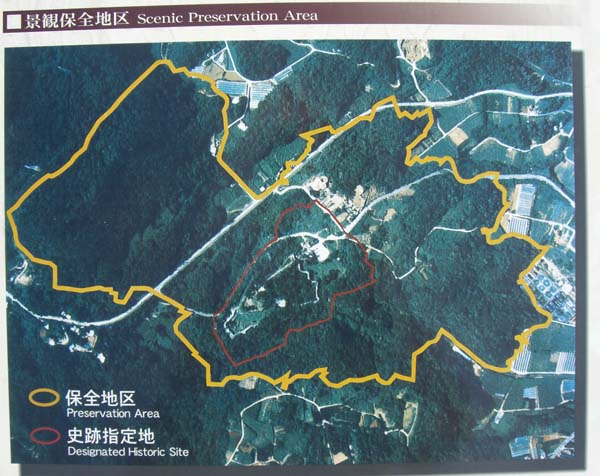 |
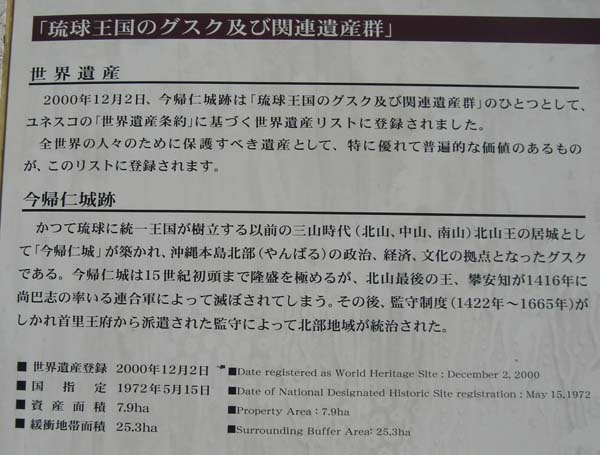 |
 |
  |
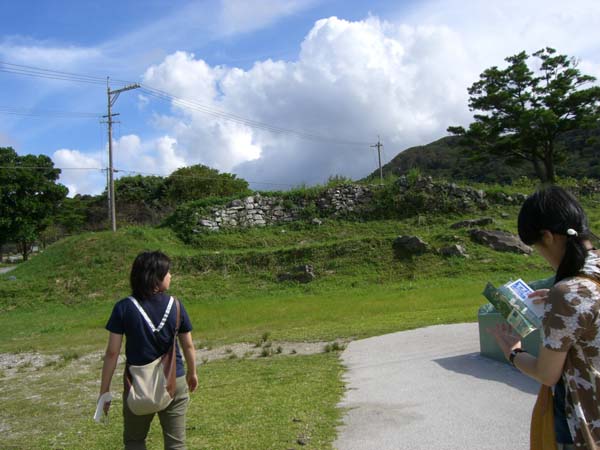 |
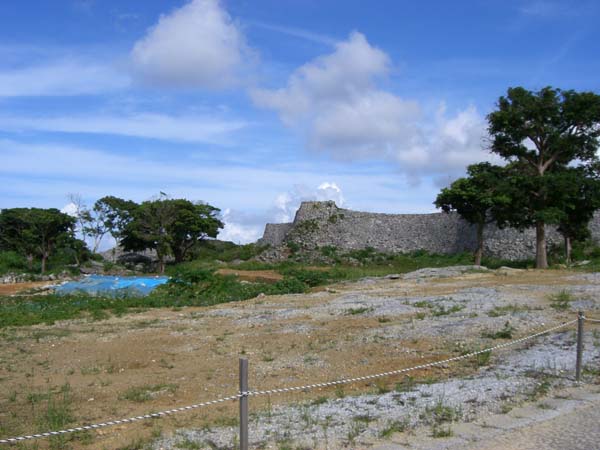 |
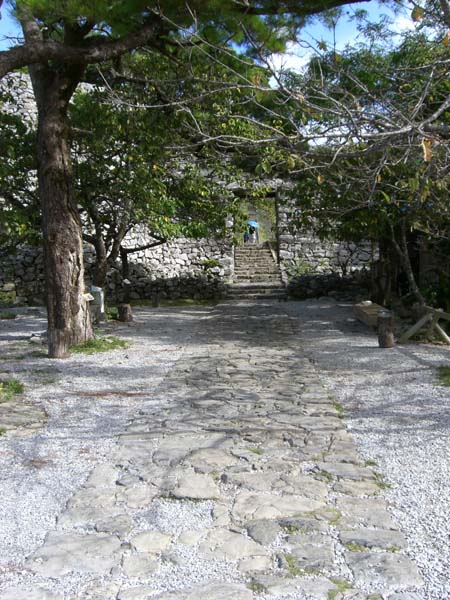 |
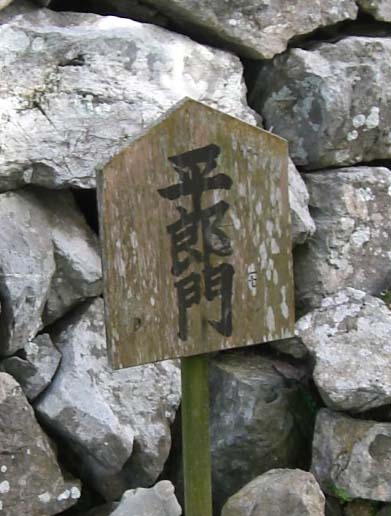 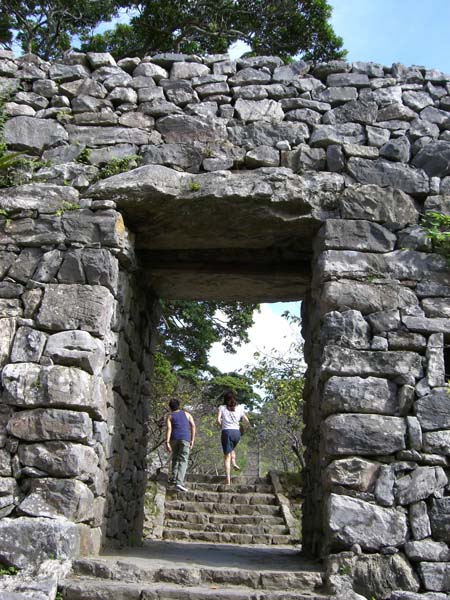 |
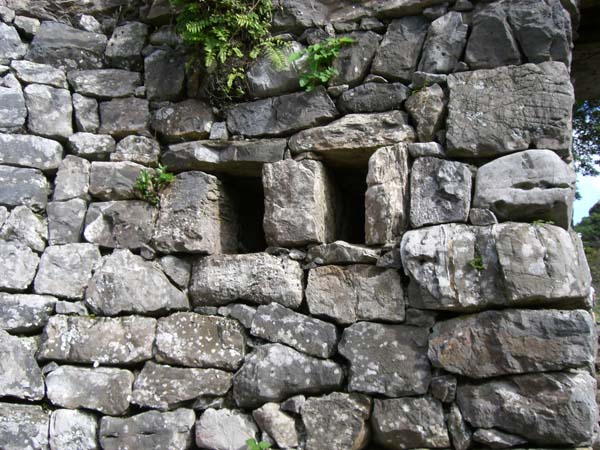 |
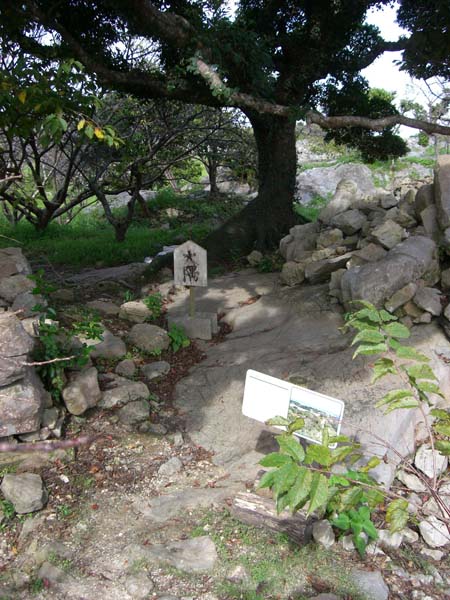 |
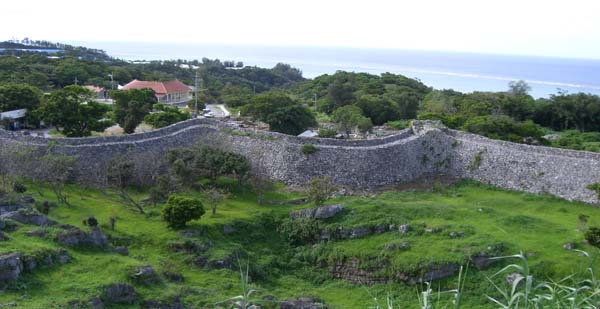 |
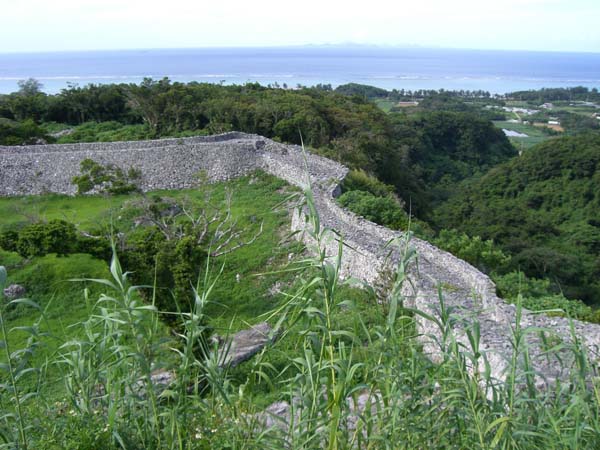 |
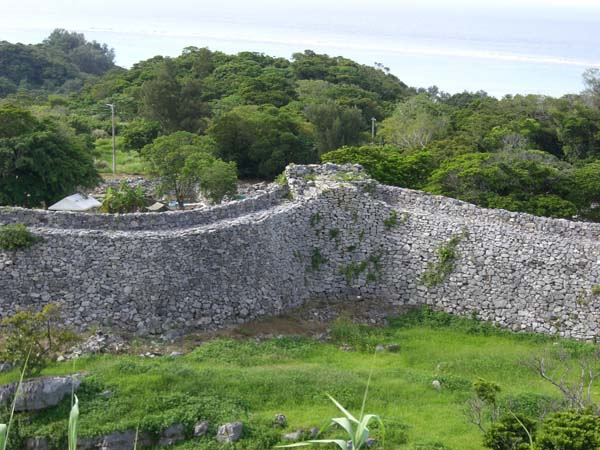 |
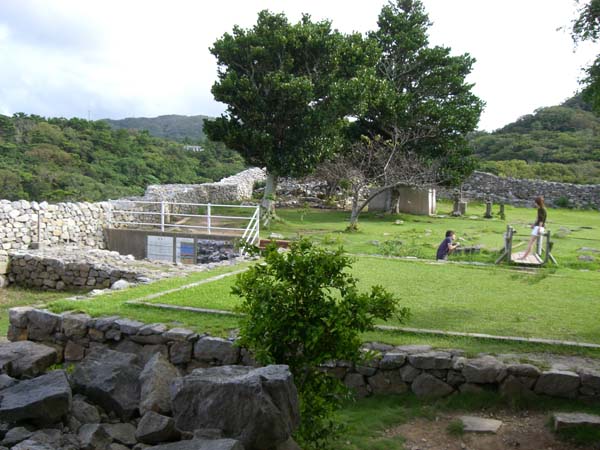 |
| 修復工事 |
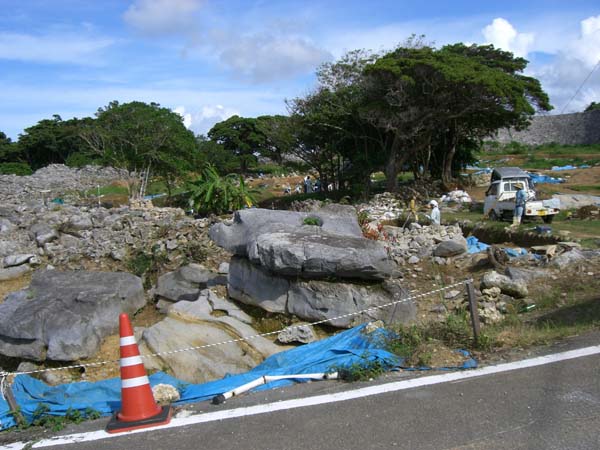 |
 |
 |
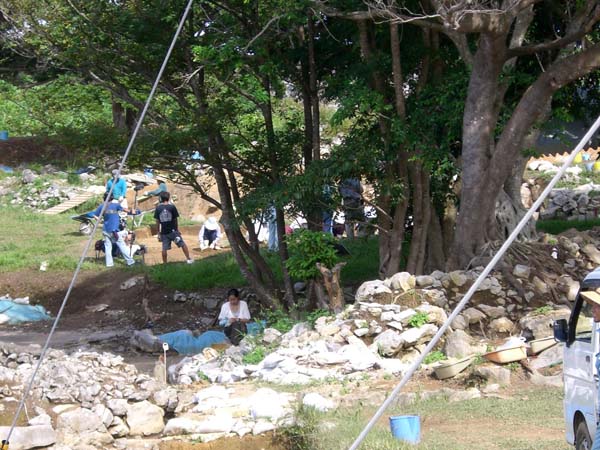 |
| 関連資料 |
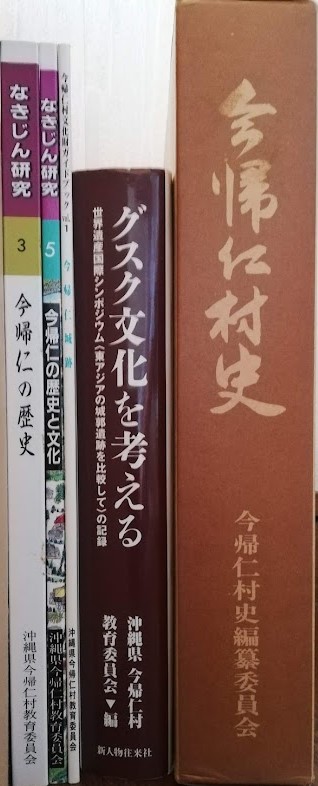 |
| 追記 |
| 世界遺産 今帰仁城跡(公式サイト) (nakijinjoseki-osi.jp) |
止
今帰仁城跡 2006年9月12日調査
| 公園案内図 |
 |
 |
|
志慶真門郭、大隅、主郭(本丸)、大庭・御内原 |
| 世界遺産エンブレム(紋章) |
 |
 |
 |
 |
 |
 |
  |
 |
 |
 |
  |
 |
 |
 |
 |
 |
 |
| 修復工事 |
 |
 |
 |
 |
| 関連資料 |
 |
| 追記 |
| 世界遺産 今帰仁城跡(公式サイト) (nakijinjoseki-osi.jp) |
止
書誌:琉球王国のグスクおよび関連遺産群
| 発行年月日 | 書名 | 編著者 | 発行所 | 備考 |
| 19750701 | 今帰仁村史 | 編纂委員会 | 今帰仁村役場 | 760頁 |
| 19930105 | 尚家継承・琉球王朝文化遺産 | |||
| 19930331 | なきじん研究3 今帰仁の歴史 | 今帰仁村歴史文化センター | ||
| 19950331 | なきじん研究5 今帰仁の歴史と文化(展示案内) | 今帰仁村歴史文化センター | ||
| 19970325 | グスク城が劇場になった 座喜味城跡活用実践集 | 読谷村教育委員会 | ||
| 20000915 | 沖縄の幽霊 | 福地曠昭 | 那覇出版社 | |
| 20001215 | 世界遺産・グスク紀行--古琉球の光と影 | 岡田輝雄(文)・国吉和夫(写真) | 琉球新報社 | |
| 20010208 | 世界遺産 琉球王国のグスク及び関連遺産群 | 「琉球王国のグスク及び関連遺産群」世界遺産登録記念事業実行委員会 | 沖縄県教育庁文化課 | |
| 20020511 | 首里城ハンドブック | 首里城研究グループ | 首里城公園友の会 | |
| 20030325 | 首里城の復元 | 首里城公園友の会編 | 海洋博覧会記念公園管理財団 | |
| 20030325 | グスク城が劇場になった 座喜味城跡活用実践集 Vol.2 | 読谷村教育委員会 | ||
| 2005 | 今帰仁城跡 今帰仁村文化財ガイドブックVol.1 | 今帰仁村教育委員会 | 今帰仁村役場 | |
| 20050330 | 読谷村文化財めぐり | 読谷村教育委員会 | ||
| 20050330 | 新版・沖縄の博物館ガイド | 沖縄県博物館協会編 | 編集工房東洋企画 | |
| 200503 | 玉陵 世界遺産・重要文化財・国指定史跡 | 那覇市教育委員会文化課 | 那覇市教育委員会 | |
| 20050604 | 読谷山花織展 開館30周年記念特別企画展 | 読谷村立歴史民俗資料館 | 読谷村教育委員会 | |
| 20051008 | 考古・民俗にみる形・彫・色 開館30周年記念特別企画展 | 読谷村立歴史民俗資料館 | 読谷村教育委員会 | |
| 沖縄の世界遺産 平井順光作品集<絵はがき> | 平井写真事務所 |
止
沖縄世界遺産調査 2006年9月12日~14日[敬称略]
| 日時 | 事項 | 備考 |
| 12日 | ||
| 07:30 | A・B、広島駅集合。Cは徳山から乗車。~14日。新幹線自由席<往復4095円>、レンタカー<1日5000円×3日間=15000円>、ガソリン代<6096円>、航空運賃・ホテル代<46600円>。計7万1791円。 | |
| 07:59 | 広島発-新幹線自由席-09:03博多着。福岡空港10:35−那覇12:10(ANA483)。ニッポンレンタカー那覇空港前レンタカー配車。 | |
| 13: | 那覇空港前レンタカー-国道332-国道331-国道329-県道82-那覇IC-沖縄自動車道-許田IC-国道58-国道449-国道505-今帰仁城跡。 | |
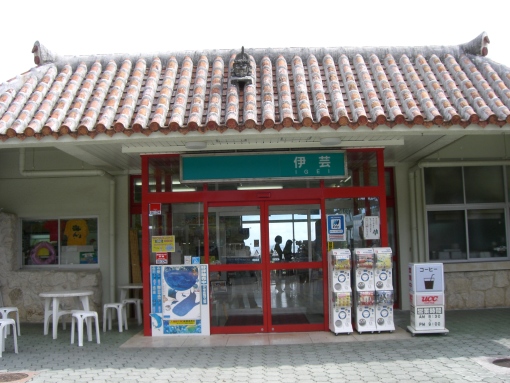 |
||
 |
||
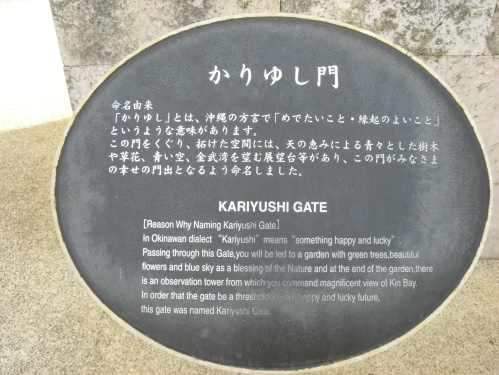 |
||
| 15:30 | 今帰仁城跡。観覧料400円。今帰仁村歴史文化センター。仲宗根より丁寧な解説。書籍4冊を購入。6000円。~17:00。 | |
| 18:00 | 道の駅許田。ソフトクリーム。 | |
| 19:10 | 座喜味城跡。真っ暗で参観困難。 | |
| 20:30 | 東京第一ホテル(ホテルグランメール)沖縄県沖縄市字与儀1205-2:(098)931-1500泊。 | |
| 21:30 | D(女学院大学卒業生、紅型工房で修行中)より電話。30分ほど話す。 | |
| 13日 | ||
| 08:20 | 座喜味城跡。読谷村立歴史民俗資料館。村立美術館。入館料200円。書籍購入。3400円。~09:50。 | |
| 11:00 | 勝連城跡。 | |
| 11:30 | 海の駅あやはし館。 | |
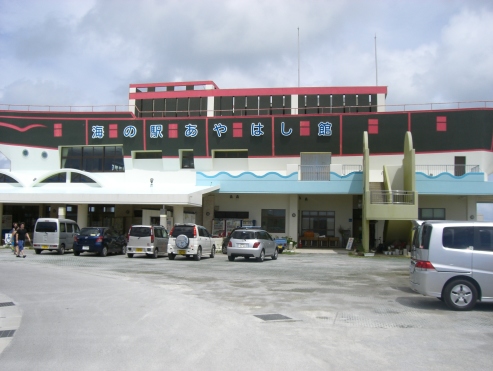 |
||
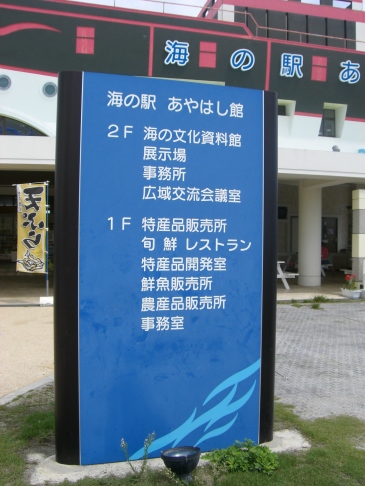 |
||
| 13:10 | 中城城跡。観覧料300円。忠魂碑。 | |
| 14:30 | 斎場御嶽。 | |
| 16:10 | 園比屋武御嶽石門。 | |
| 16:15 | 首里城跡:公園観覧料800円。ミュージアムショップ「球陽」で書籍2冊購入。1900円。 | |
| 17:15 | 玉陵。観覧料200円。 | |
| 20 | 沖縄レインボーホテル(沖縄県那覇市松尾1丁目19番地17、TEL (098)866-5401)泊。国際通りで土産物の購入。 | |
| 14日 | ||
| 07:30 | ホテルフロントで本などの宅急便(スーパーペリカン便)手続き。着払いしかしないとのこと。15日午前中届く。2510円。 | |
| 09:00 | 識名園。観覧料300円。 | |
| 10:30 | 沖縄戦跡国定公園広場。沖縄県平和祈念資料館。観覧料300円。 | |
| 14:50 | 那覇空港前レンタカー返車。ガソリン代:カードでの支払い。16:20那覇空港(ANA490)−17:55福岡-博多18:35-19:55広島。 | |
入手した文献一覧
| 発行年月日 | 書名 | 編著者 | 発行所 |
| 19750701 | 今帰仁村史 | 今帰仁村役場 | |
| 19930105 | 尚家継承・琉球王朝文化遺産 | ||
| 19930331 | なきじん研究3 今帰仁の歴史 | 今帰仁村歴史文化センター | |
| 19950331 | なきじん研究5 今帰仁の歴史と文化(展示案内) | 今帰仁村歴史文化センター | |
| 19970325 | グスク城が劇場になった 座喜味城跡活用実践集 | 読谷村教育委員会 | |
| 20000915 | 沖縄の幽霊 | 福地曠昭 | 那覇出版社 |
| 20001215 | 世界遺産・グスク紀行--古琉球の光と影 | 岡田輝雄(文)・国吉和夫(写真) | 琉球新報社 |
| 20010208 | 世界遺産 琉球王国のグスク及び関連遺産群 | 「琉球王国のグスク及び関連遺産群」世界遺産登録記念事業実行委員会 | 沖縄県教育庁文化課 |
| 20020511 | 首里城ハンドブック | 首里城研究グループ | 首里城公園友の会 |
| 20030325 | 首里城の復元 | 首里城公園友の会編 | 海洋博覧会記念公園管理財団 |
| 20030325 | グスク城が劇場になった 座喜味城跡活用実践集 Vol.2 | 読谷村教育委員会 | |
| 20040331 | 読谷村の戦跡めぐり | 読谷村史編集室 | 読谷村役場 |
| 200403 | 戦時記録(上・下巻) 読谷村史第5巻資料編4 | 読谷村史編集室 | 読谷村役場 |
| 2005 | 今帰仁城跡 今帰仁村文化財ガイドブックVol.1 | 今帰仁村教育委員会 | 今帰仁村役場 |
| 20050330 | 読谷村文化財めぐり | 読谷村教育委員会 | |
| 20050330 | 新版・沖縄の博物館ガイド | 沖縄県博物館協会編 | 編集工房東洋企画 |
| 200503 | 玉陵 世界遺産・重要文化財・国指定史跡 | 那覇市教育委員会文化課 | 那覇市教育委員会 |
| 20050604 | 読谷山花織展 開館30周年記念特別企画展 | 読谷村立歴史民俗資料館 | 読谷村教育委員会 |
| 20051008 | 考古・民俗にみる形・彫・色 開館30周年記念特別企画展 | 読谷村立歴史民俗資料館 | 読谷村教育委員会 |
| 沖縄の世界遺産 平井順光作品集<絵はがき> | 平井写真事務所 |
止
琉球王国のグスクおよび関連遺産群
参参考サイト
https://whc.unesco.org/en/list/972/
https://bunka.nii.ac.jp/special_content/hlink9
記載物件名
琉球王国のグスク及び関連遺産群
構成資産
今帰仁城跡、座喜味城跡、勝連城跡、中城城跡、首里城跡、園比屋武御嶽石門、玉陵、識名園、斎場御嶽
所在地(市町村)
沖縄県国頭郡今帰仁村、中頭郡読谷村・北中城村・中城村、うるま市、那覇市、南城市
| 首里城跡 | 那覇市 | (しゅりじょうあと)Shurijo Castle |
| 玉陵 | (タマウドゥン)Tamaudun | |
| 園比屋武御嶽石門 | (そのひゃんうたきいしもん) Sonohyan-utaki |
|
| 識名園 | (しきなえん)Shikina-En | |
| 斎場御獄 | 島尻郡 知念村 | (セーファウタキ)Sefa-utaki |
| 中城城跡 | 中頭郡 中城村・北中城村 | (なかぐすく)Nakagusuku Castle |
| 勝連城跡 | 中頭郡 勝連町 | (かつれん)Katsuren Castle |
| 座喜味城跡 | 中頭郡 読谷村 | (ざきみ)Zakimi Castle |
| 今帰仁城跡 | 国頭郡 今帰仁村 | (なきじんじょう)Nakijin Castle |
暫定記載年
平成4年(1992年)
推薦年月
平成11年(1999年)6月
記載年月
平成12年(2000年)12月
評価基準
(ⅱ)(ⅲ)(ⅵ)
都道府県所管課
沖縄県教育庁文化財課
自治体等HP
https://www.pref.okinawa.jp/site/kodomo/land/bunka/sekaiisan/index.html(沖縄県HP)
ユネスコ資産ページ
https://whc.unesco.org/en/list/972
写真提供
沖縄県教育庁
関連資料
参考資料(位置図)
世界遺産一覧表記載推薦書
顕著な普遍的価値(OUV)の言明
琉球列島は日本列島南端に位置します。14世紀中頃には三王国が分立していましたが、15世紀前半にこれらを統一して琉球王国が成立しました。中国・朝鮮・日本・東南アジア諸国との広域の交易を経済的な基盤とし、当時の日本の文化とは異なった国際色豊かな独特の文化が形成されました。その特色を如実に反映している文化遺産が城(グスク)です。
今帰仁城・座喜味城・勝連城・中城城は、いずれも三国鼎立期から琉球王国成立期にかけて築かれた城であり、首里城は琉球王がその居所と統治機関を設置するために築いたものです。これらの城壁は、主として珊瑚石灰岩により造営されており、曲面を多用した琉球独自の特色を備えています。さらに、王室関係の遺跡として円覚寺跡、玉陵、識名園(別邸)が残り、王国文化をうかがうことができます。
止
『広島県の近代化遺産―広島県近代化遺産(建造物等)総合調査報告書』(広島県教育委員会、1998.3)
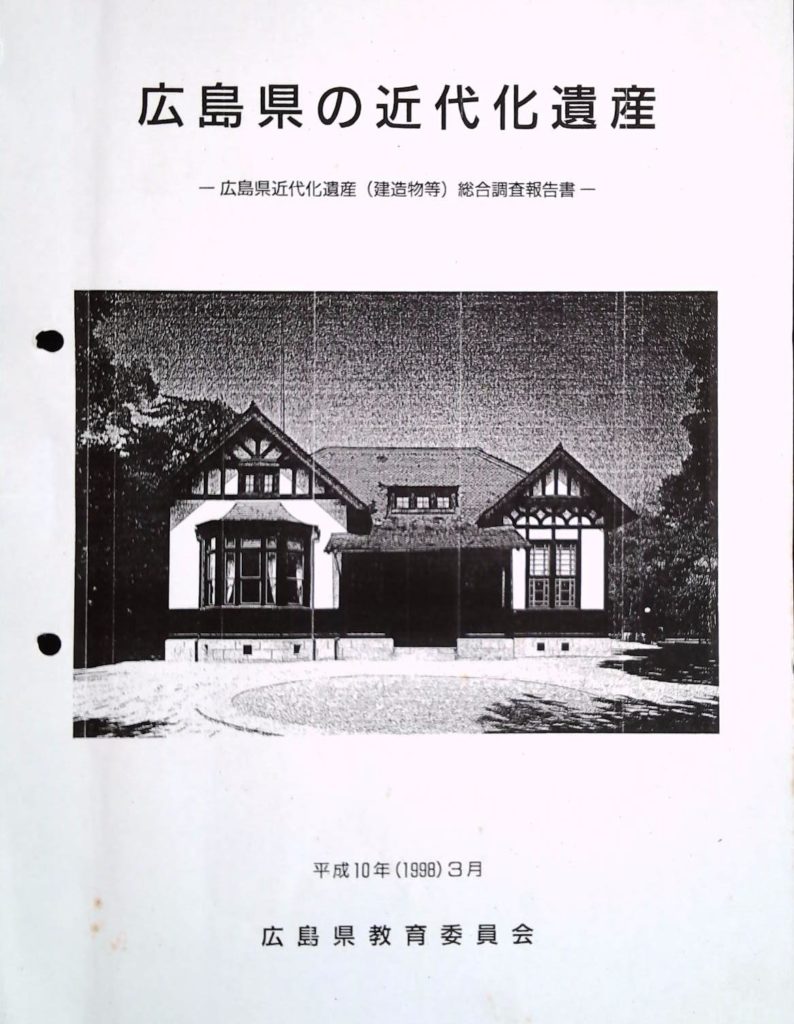 |
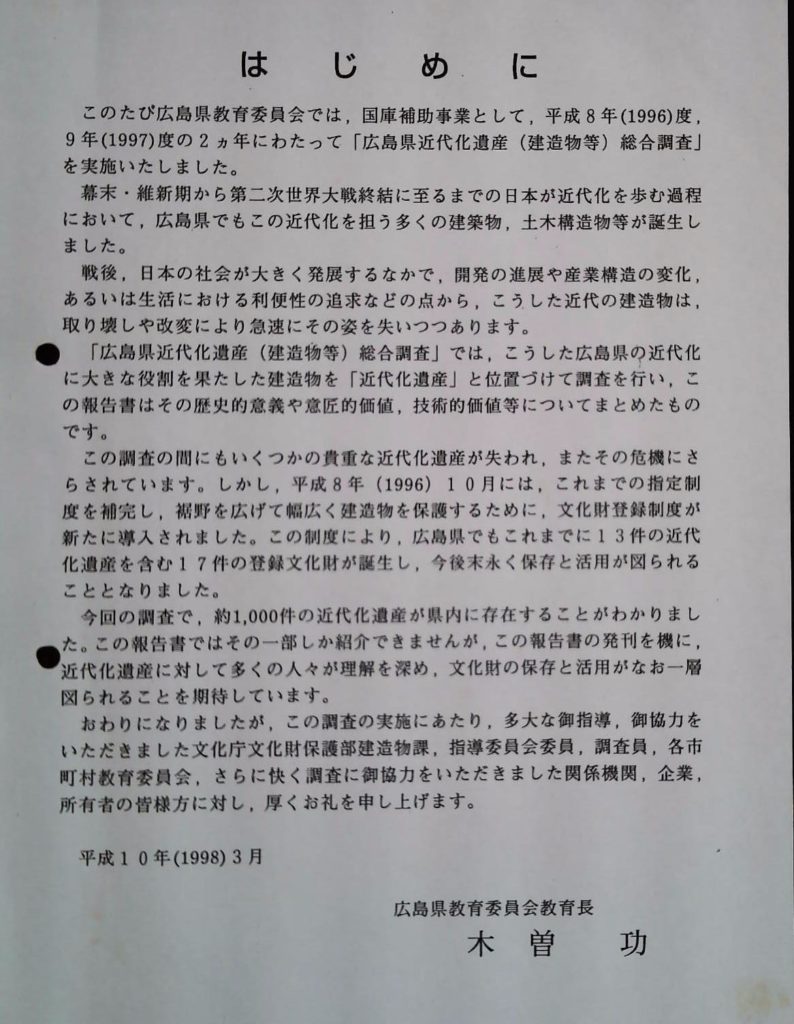 |
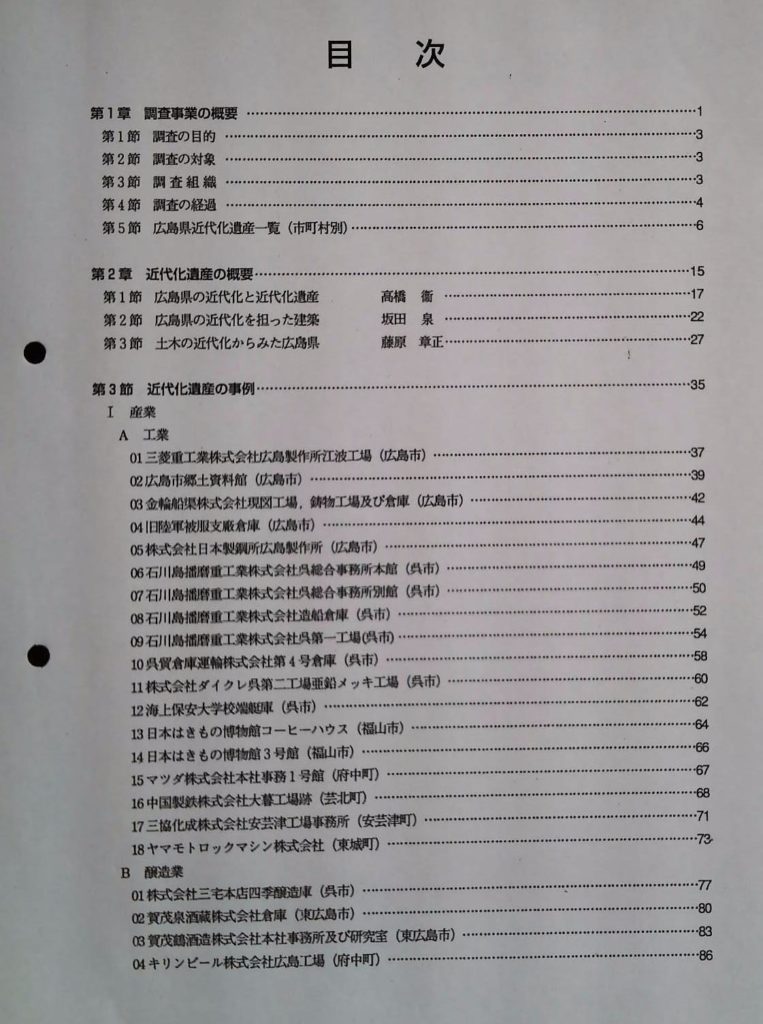 |
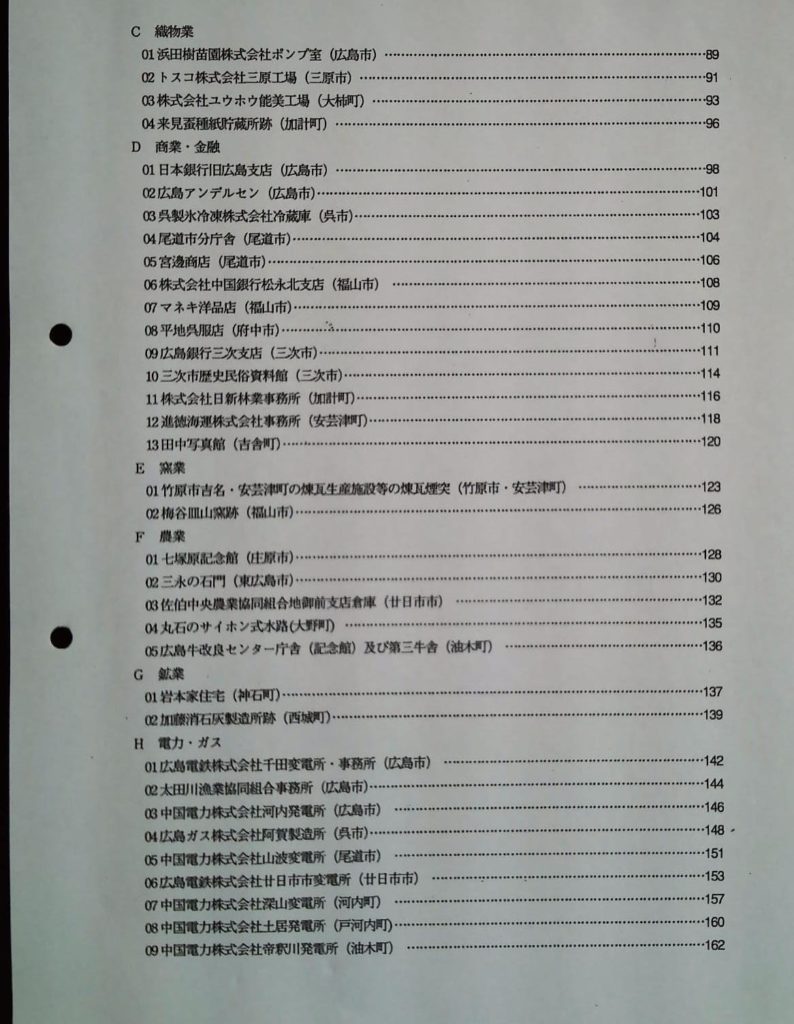 |
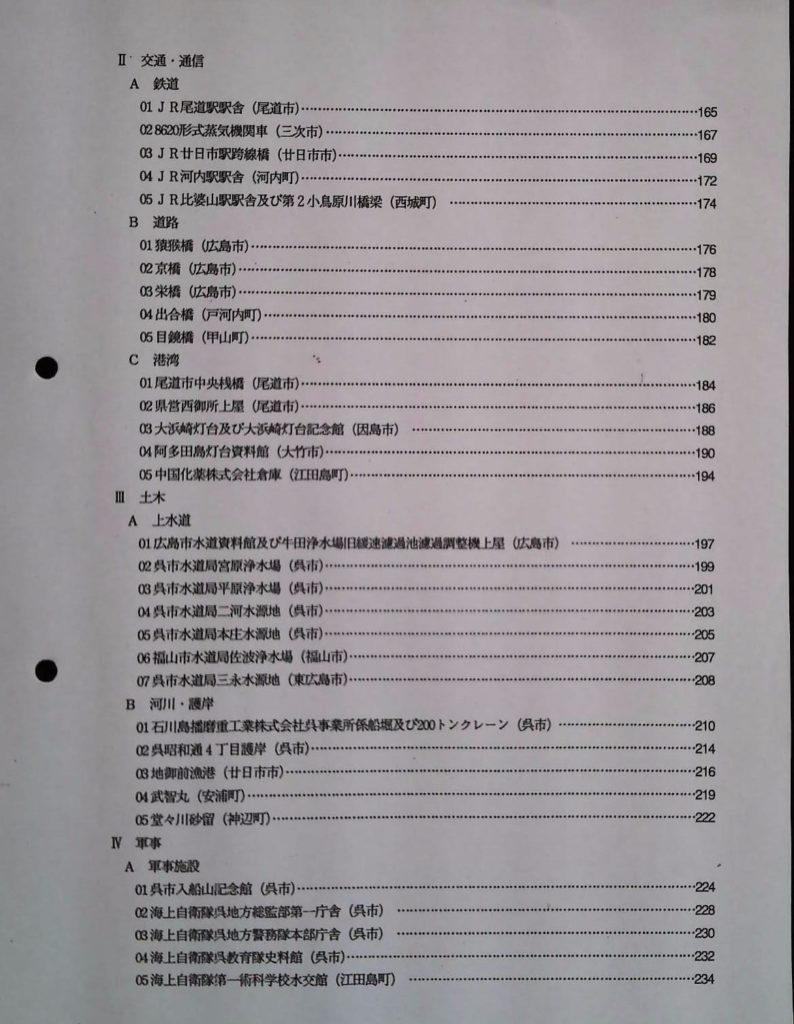 |
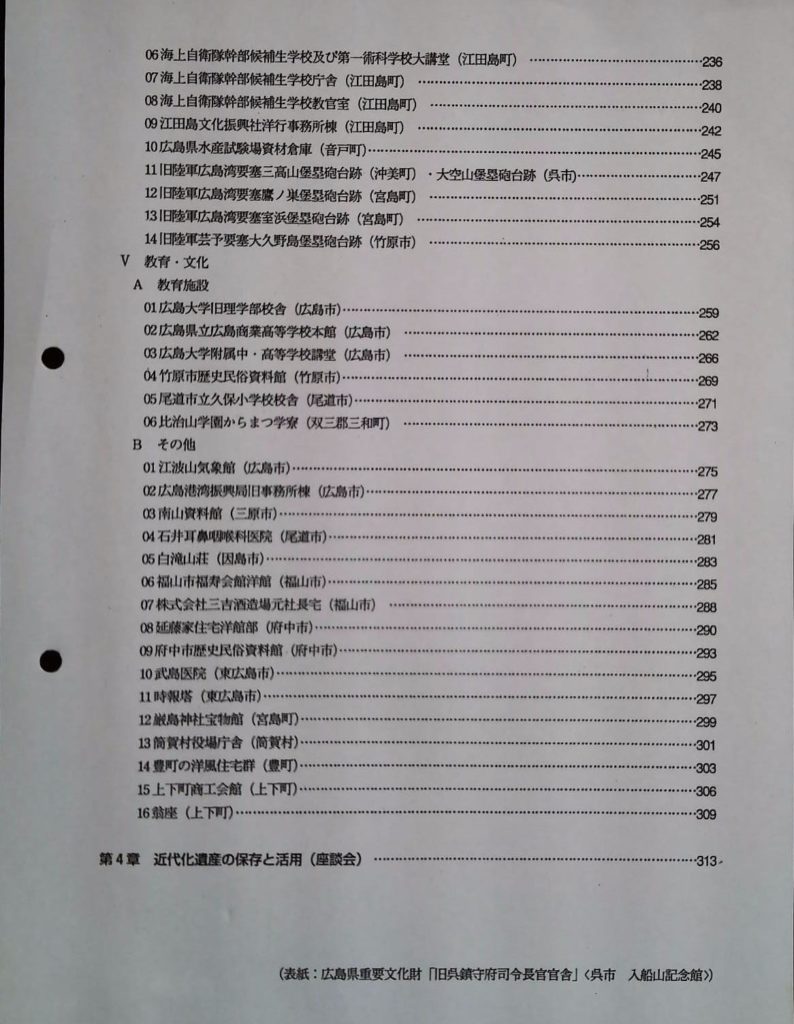 |
 |
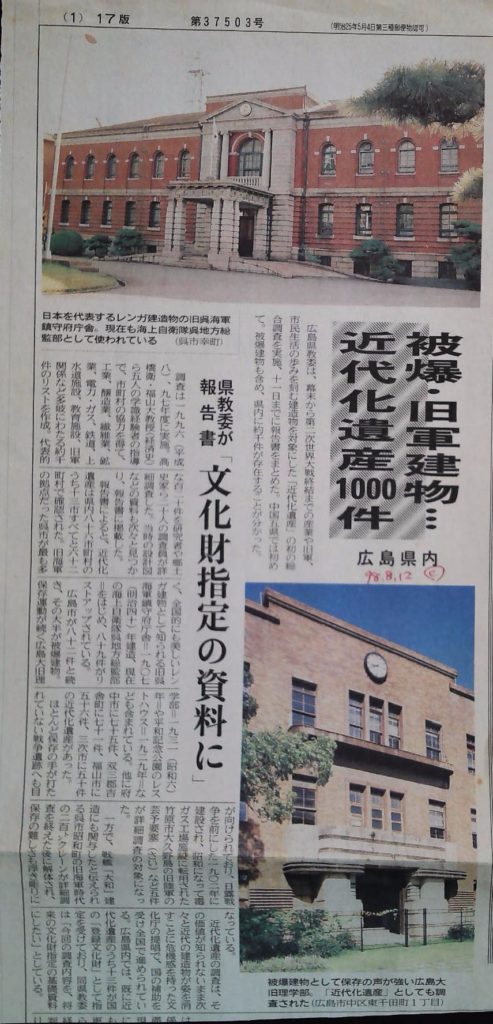 |
止
Struve Geodetic Arc – map of inscribed property<作業中>
| Struve Geodetic Arc – UNESCO World Heritage Centre | |
| (Belarus, Estonia, Finland, Latvia, Lithuania, Norway, Republic of Moldova, Russian Federation, Sweden, Ukraine) | |
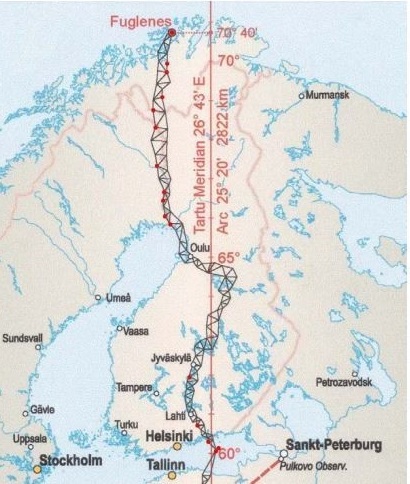 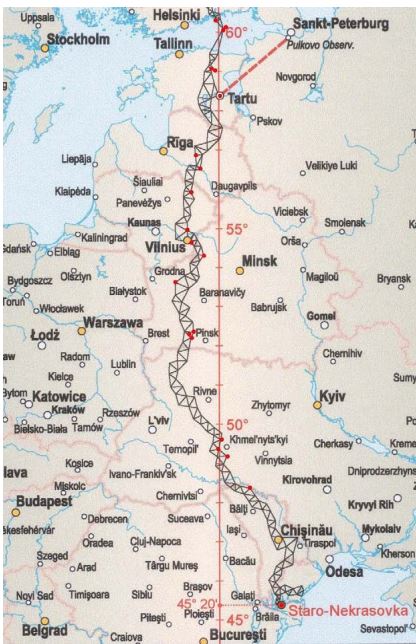 |
Norway, Sweden, Finland, Russian Federation, Estonia, Latvia, Lithuania, Belarus, Ukraine Republic of Moldova, |
over
Struve Geodetic Arc – UNESCO World Heritage Centre
Struve Geodetic Ar<作業中>
he Struve Arc is a chain of survey triangulations stretching from Hammerfest in Norway to the Black Sea, through 10 countries and over 2,820 km. These are points of a survey, carried out between 1816 and 1855 by the astronomer Friedrich Georg Wilhelm Struve, which represented the first accurate measuring of a long segment of a meridian. This helped to establish the exact size and shape of the planet and marked an important step in the development of earth sciences and topographic mapping. It is an extraordinary example of scientific collaboration among scientists from different countries, and of collaboration between monarchs for a scientific cause. The original arc consisted of 258 main triangles with 265 main station points. The listed site includes 34 of the original station points, with different markings, i.e. a drilled hole in rock, iron cross, cairns, or built obelisks.
Brief synthesis
The determination of the size and shape of the world was one of the most important problems of natural philosophy since at least the 4th century B.C. The development, in the 16th century, of a measurement system called “triangulation” improved the ability to determine the size and shape of the world. In this system, long chains of triangles were measured, creating arcs that stretched along hundreds and thousands of kilometres.
The Struve Geodetic Arc is a chain of survey triangulations stretching from Hammerfest in Norway to the Black Sea, through ten countries and over 2,820 km. These are points of a survey, carried out between 1816 and 1855 by several scientists (surveyors) under leadership of the astronomer Friedrich Georg Wilhelm Struve, which represented the first accurate measuring of a long segment of a meridian. This helped to establish the exact size and shape of our planet and marked an important step in the development of earth sciences and topographic mapping. It is an extraordinary example of the development of sciences and of collaboration among scientists from different countries, as well as monarchs, for a common scientific cause.
Prior to the Struve Geodetic Arc, an arc of about 2,400 km had been measured in India by Lambton and Everest (completed in 1845), and a shorter arc in Lithuania by Carl Tenner. Struve, who was working at the Dorpat University (currently University of Tartu in Estonia), decided that he would establish an arc following a line of longitude (meridian) passing through the observatory of the university. The new long arc, later to be known as the Struve Geodetic Arc, was eventually created by connecting earlier, shorter arcs to the southern one measured by Tenner, and their extension to the north and south. The arc thus covered a line connecting Fuglenæs, near Hammerfest at the Arctic Ocean, with Staro-Nekrassowka, near Ismail, on the Black Sea shores, along more than 2,800 km. The original arc consisted of 258 main triangles with 265 main station points. The inscribed property includes 34 of the original station points established by Struve and his colleagues between 1816 and 1851 – four points in Norway, four in Sweden, six in Finland, two in Russia, three in Estonia, two in Latvia, three in Lithuania, five in Belarus, one in Moldova and four in Ukraine. Other preserved sites of the Arc are protected nationally.
These marks take different forms: small holes drilled in rock surfaces, and sometimes filled with lead; cross-shaped engraved marks on rock surfaces; solid stone or brick with a marker inset; rock structures (cairns) with a central stone or brick marked by a drilled hole; individual bricks; as well as especially constructed ‘monuments’ to commemorate the point and the arc.
The Struve Geodetic Arc is an extraordinary example of the interchange of human values in the form of international scientific collaboration, as well as an outstanding example of a technological ensemble.
Criterion (ii): The first accurate measuring of a long segment of a meridian, helping in the establishment of the exact size and shape of the world exhibits an important step in the development of earth sciences. It is also an extraordinary example for interchange of human values in the form of scientific collaboration among scientists from different countries. It is at the same time an example for collaboration between monarchs of different powers, for a scientific cause.
Criterion (iv): The Struve Geodetic Arc is undoubtedly an outstanding example of a technological ensemble – presenting the triangulation points of the measuring of the meridian, being the non-movable and non-tangible part of the measuring technology.
Criterion (vi): The measuring of the arc and its results are directly associated with humans wondering about their world, its shape and size. It is linked with Sir Isaac Newton’s theory that the world is not an exact sphere.
Integrity
The inscribed property consists of 34 components, which in total comprise an area of 0.6 ha, with buffer zones amounting to a total of 11 ha. All components of the Struve Geodetic Arc are linked to one chain and a number of the Arc sites belong to national state geodetic reference networks that confer integrity even with the geodetic measurements processed today.
Authenticity
The inscribed components of the property have special characteristics and significance on a technological and scientific level. All points are maintained in their original location and changes are limited to some later constructions marking the locations.
Protection and management requirements
For the inscription of the Struve Geodetic Arc, the ten countries involved collaborated in locating and investigating the sites of historical measurements by using available geodetic observation data and by means of the recent measurement methods as well as satellite geodesy. Upon identification of the component parts, each State Party provided legal protection in accordance with its national frameworks, which in practice entails that some points are covered by laws protecting geodetic points and also by laws for the protection of cultural heritage.
At the national level, each State authority, usually the national mapping authority with the involvement of local administrative authorities, is responsible for the conservation and management of the Struve Geodetic Arc. At the international level, management is the responsibility of the Coordinating Committee, which meets every other year and is run according to management mechanisms agreed upon by all ten countries.
Based on the resolutions of the Coordinating Committee, national representative organizations actively promote the Struve Geodetic Arc via different tasks, such as the producing post stamps and envelopes (completed by Belarus, Estonia, Finland, Latvia, Lithuania, Moldova, Sweden, Ukraine); making promotional movies and educational leaflets, books and articles; preparing exhibitions; translating documentation; restoring geodetic instruments and other materials, and even minting commemorative coins for the Struve Geodetic Arc (Belarus, Moldova).
Ukraine: UNESCO statement 20220224<作成中>
UNPress release
ESCO’s statement on the recent developments in Ukraine
UNESCO is deeply concerned about the ongoing military operations and the escalation of violence in Ukraine. As stated by the UN Secretary-General, such operations are violations of the territorial integrity and sovereignty of Ukraine and are inconsistent with the Charter of the United Nations.
UNESCO calls for respect for international humanitarian law, notably the 1954 Hague Convention for the Protection of Cultural Property in the Event of Armed Conflict and its two (1954 and 1999) Protocols, to ensure the prevention of damage to cultural heritage in all its forms.
This also includes the obligations under the United Nations Security Council Resolution 2222 (2015) on the protection of journalists, media professionals and associated personnel in situations of conflict, to promote free, independent and impartial media as one of the essential foundations of a democratic society, and which can contribute to the protection of civilians.
UNESCO also calls for restraint from attacks on, or harm to, children, teachers, education personnel or schools, and for the right to education to be upheld.
over
Ukraine: UNESCO statement<作成中>
Following the adoption by the United Nations General Assembly of the Resolution on Aggression against Ukraine, and in light of the devastating escalation of violence, UNESCO is deeply concerned by developments in Ukraine and is working to assess damage across its spheres of competence (notably education, culture, heritage and information) and to implement emergency support actions.
The UNGA Resolution reaffirms the paramount importance of the UN Charter and commitment to the sovereignty, independence, unity, and territorial integrity of Ukraine within its internationally recognized borders, and it demands “that the Russian Federation immediately cease its use of force against Ukraine.”
The Director-General, Audrey Azoulay, fully concurs with the opening remarks made by the Secretary-General at the Special Session of the General Assembly, during which he said that “this escalating violence — which is resulting in civilian deaths, including children – is totally unacceptable.”
In addition, she calls for the “protection of Ukrainian cultural heritage, which bears witness to the country’s rich history, and includes its seven World Heritage sites – notably located in Lviv and Kyiv; the cities of Odessa and Kharkiv, members of the UNESCO Creative Cities Network; its national archives, some of which feature in the UNESCO Memory of the World Register; and its sites commemorating the tragedy of the Holocaust.”
“We must safeguard this cultural heritage, as a testimony of the past but also as a vector of peace for the future, which the international community has a duty to protect and preserve for future generations. It is also to protect the future that educational institutions must be considered sanctuaries.”
Consistent with its mandate, UNESCO demands the immediate cessation of attacks on civilian facilities, such as schools, universities, memorial sites, cultural and communication infrastructures, and deplores civilian casualties, including students, teachers, artists, scientists and journalists. These include women and children, girls especially, disproportionately impacted by the conflict and displacement.
In the field of education, Resolution 2601 adopted in 2021 by the UN Security Council states that UN Member States are to “prevent attacks and threats of attacks against schools and ensure the protection of schools and civilians connected with schools, including children and teachers during armed conflict as well as in post-conflict phases”. The General Assembly Resolution of 2 March expresses grave concern at reports of attacks on civilian facilities including schools. In this regard, UNESCO strongly condemns attacks against education facilities, with the damaging of at least seven institutions in the past week, including the attack on 2 March on Karazin Kharkiv National University.
The nationwide closure of schools and education facilities has affected the entire school-aged population — 6 million students between 3 and 17 years old, and more than 1.5 million enrolled in higher education institutions. The escalation of violence hampers the protective role of education, and the impact may be far-reaching including in neighbouring countries.
In the field of culture, UNESCO underlines the obligations of international humanitarian law, notably the 1954 Hague Convention for the Protection of Cultural Property in the Event of Armed Conflict and its two (1954 and 1999) Protocols, to refrain from inflicting damage to cultural property, and condemns all attacks and damage to cultural heritage in all its forms in Ukraine. UNESCO calls also for the full implementation of UN Security Council Resolution 2347.
In this respect, UNESCO is gravely concerned with the damages incurred by the city of Kharkiv, UNESCO Creative City for Music, and the historic centre of Chernihiv, on Ukraine’s World Heritage Tentative List. UNESCO deeply regrets reports of damage to the works of the celebrated Ukrainian artist, Maria Primachenko, with whose anniversary UNESCO was associated in 2009.
UNESCO condemns also the attack that affected the Babyn Yar Holocaust memorial, the site of one of the largest mass shootings of Jews during World War II, and calls for the respect of historic sites, whose value for education and remembrance is irreplaceable.
In order to prevent attacks, UNESCO, in close coordination with the Ukrainian authorities, is working to mark as quickly as possible key historic monuments and sites across Ukraine with the distinctive emblem of the 1954 Hague Convention, an internationally recognised signal for the protection of cultural heritage in the event of armed conflict. In addition, UNESCO has approached the Ukrainian authorities with a view to organising a meeting with museum directors across the country to help them respond to urgent needs for safeguarding museum collections and cultural property. In cooperation with UNITAR/UNOSAT, UNESCO will be monitoring the damages incurred by cultural sites through satellite imagery analysis.
In the field of access to information and freedom of expression, UNESCO recalls its previous statement underlining obligations under UN Security Council Resolution 2222 to protect media professionals and associated personnel. It further notes, as in the same resolution, “media equipment and installations constitute civilian objects, and in this respect shall not be the object of attack or of reprisals, unless they are military objectives”.
In this respect, UNESCO is deeply concerned about reports of the targeting of media infrastructure, including the shelling of Kyiv’s main television tower on 1 March 2022, with multiple reported fatalities, including at least one media worker, as well as cases of violence against journalists and attempts to restrict access to the Internet.
In a conflict situation, free and independent media are critical for ensuring civilians have access to potentially life-saving information and debunking disinformation and rumours.
At the request of a group of Member States, the UNESCO Executive Board will hold a Special Session on 15 March “to examine the impact and consequences of the current situation in Ukraine in all aspects of UNESCO’s mandate”.
over
ウクライナの世界遺産<作業中>
| No. | 登録年 | 遺産名 | 種別 | 備考 |
| 1 | 1990 | キエフ-ペチェールスカヤ大修道院 | 文化遺産 / (i)(ii)(iii)(iv) | |
| 2 | 1998 | リヴィウ歴史地区(1998年) | 文化遺産 /(ii)(v) | |
| 3 | 2005 | シュトゥルーヴェの三角点アーチ観測地点群 | 文化遺産/(ii)(iv)(vi) | |
| 4 | 2007 | カルパチア山脈とヨーロッパ地域の古代及び原生ブナ林 | 自然遺産 / (ix) | |
| 2007、2011, 2017 | ||||
| 5 | 2011 | ブコヴィナ・ダルマティアの主教座施設 | 文化遺産 / (ii)(iii)(iv) | |
| 6 | 2013 | 古代都市「タウリカのヘルソネソス」とそのホーラ | 文化遺産 / (ii)(v) | |
| 7 | 2013 | ポーランド、ウクライナのカルパチア地方の木造教会 | 文化遺産 / (iii)(iv) | |
止